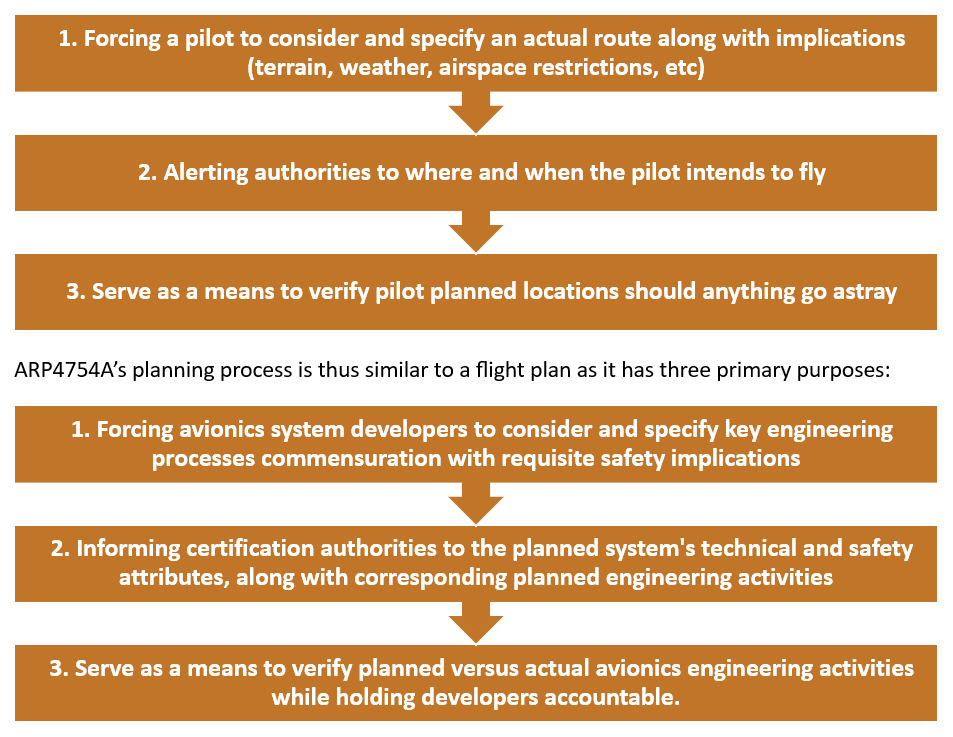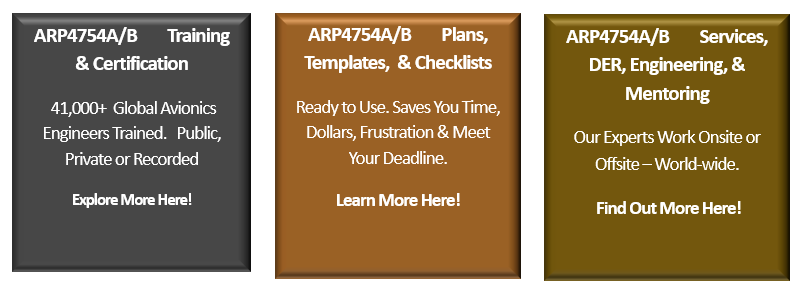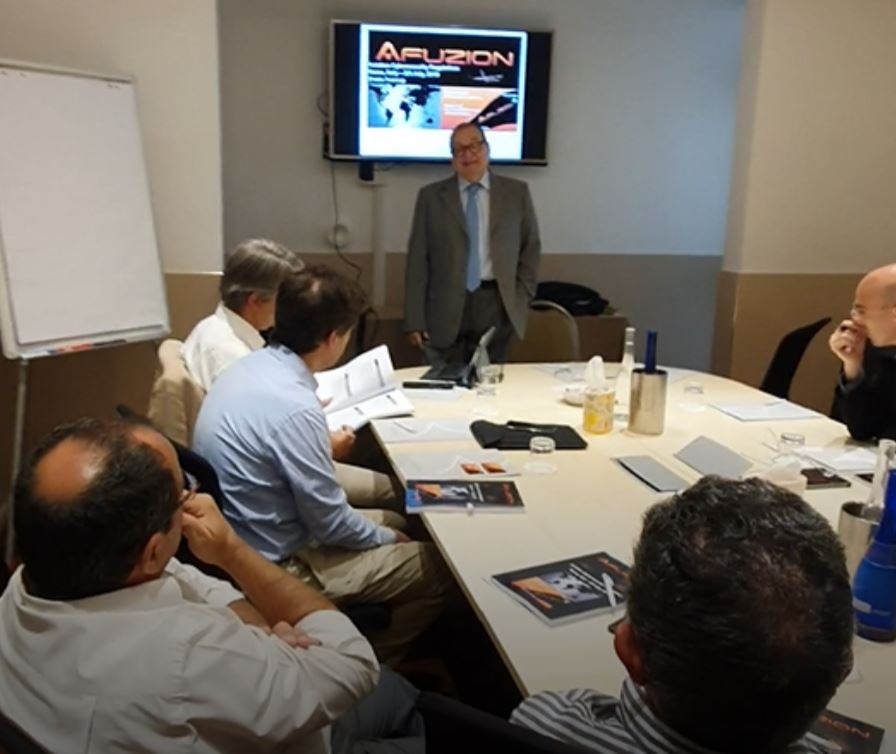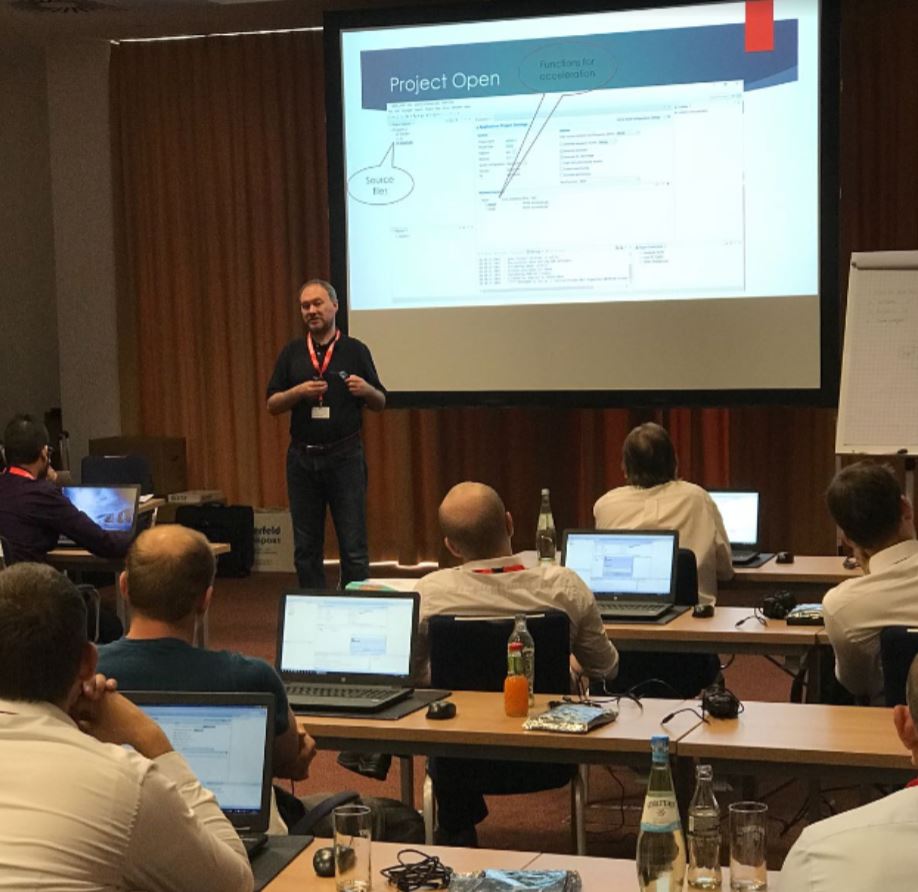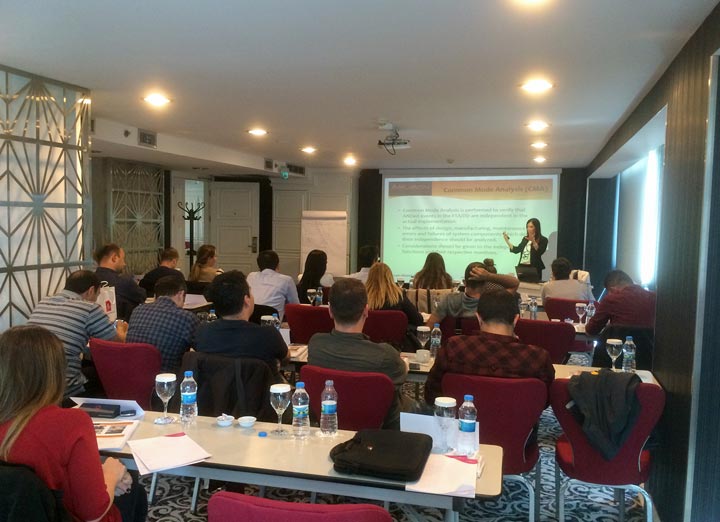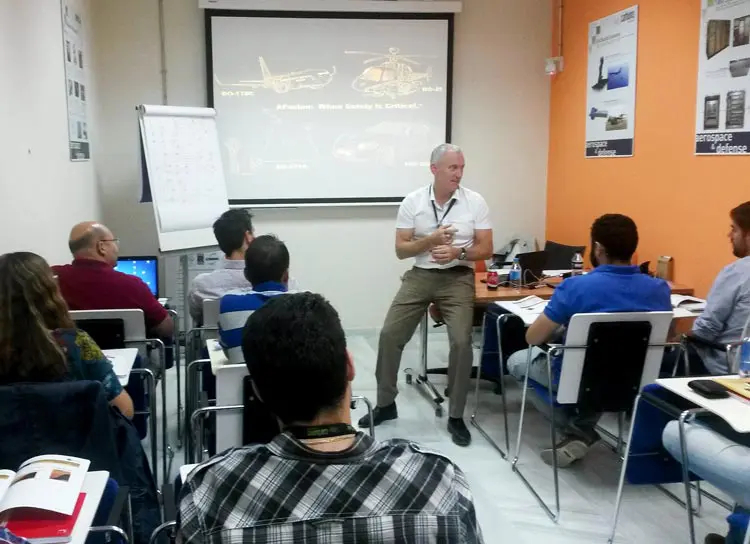Introduction To
ARP4754A & ARP4754B
Evolution of standard: ARP4754 🡢 ARP4754A 🡢 ARP4754B
You now know the “Old Days” of technology refer to any time prior to last year. In the Very Old Days (moon landings, space shuttles, commercial jets with four engines) safety was addressed by brains and refinement: smart engineers did their best to prevent accidents then refinement was applied when those best efforts were less than perfect. In the Very Old days, computing horsepower was thinner, schedules were fatter, and acceptable safety generally ensued: space shuttles had a 98.5 percent chance of not exploding and commercial aircraft had fatal crashes “only” a few times annually. Then the very old days gave way to mere old days, and the very old ways didn’t work as well. Some said the engineers were not as smart while others said those engineers were trying to make the computers too smart. But all agreed that more formalized safety was needed and the Society of Automotive Engineers (SAE) had been handling Aerospace Recommended Practices (ARP’s) for decades. SAE ARP4754, Certification Considerations for Highly-Integrated or Complex Aircraft Systems, was published in November 1996. Its tightly-coupled sibling ARP4761, Guidelines and Methods for Conducting the Safety Assessment Process on Civil Airborne Systems and Equipment, was published the next month, December 1996.
ARP4754A Today
- ARP4754A’s title states “guidelines,” but failure to understand and apply ARP4754A may reduce safety and will greatly reduce your ability to achieve certification. The ability to demonstrate robust, safe avionics begins with the approach to systems safety before development. It is very difficult to apply retrospectively in order to rectify a weak system.
- While its predecessor ARP4754 was largely similar, too many organizations treated it as “optional” befitting its name “Guideline”; however, certification organizations worldwide have increasingly, and formally, mandated adherence to this latest version, ARP4754A.
- Plan your aircraft/system’s development lifecycle ecosystem;
- Implement Safety activities per ARP4761 (ARP4761A starting in 2018);
- Define and justify Assurance Level;
- Define system architecture and requirements; Validate;
- Perform Verification and Configuration Management;
- Implement Process Assurance and prove Transition Criteria.
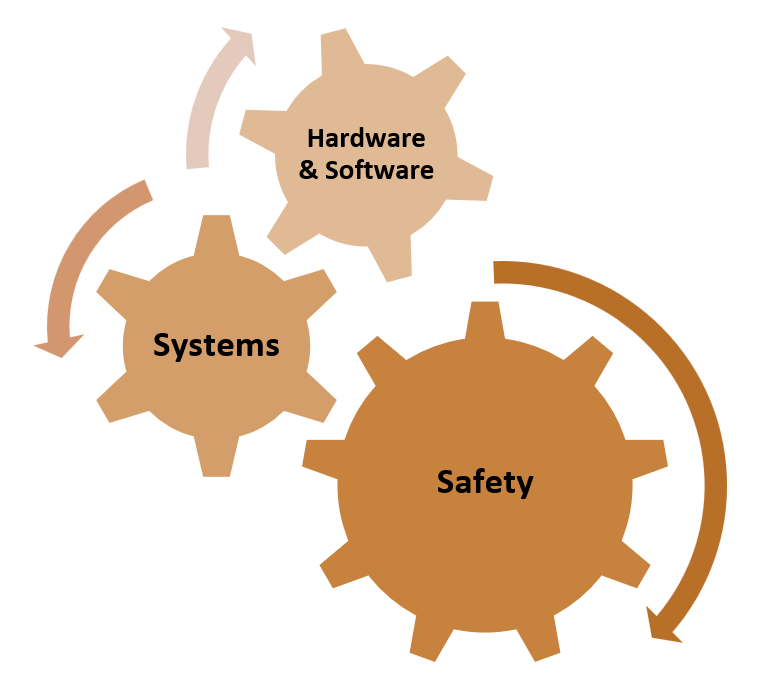

ARP4754A Today
- ARP4754A’s title states “guidelines,” but failure to understand and apply ARP4754A may reduce safety and will greatly reduce your ability to achieve certification. The ability to demonstrate robust, safe avionics begins with the approach to systems safety before development. It is very difficult to apply retrospectively in order to rectify a weak system.
- While its predecessor ARP4754 was largely similar, too many organizations treated it as “optional” befitting its name “Guideline”; however, certification organizations worldwide have increasingly, and formally, mandated adherence to this latest version, ARP4754A.
- Plan your aircraft/system’s development lifecycle ecosystem;
- Implement Safety activities per ARP4761 (ARP4761A starting in 2018);
- Define and justify Assurance Level;
- Define system architecture and requirements; Validate;
- Perform Verification and Configuration Management;
- Implement Process Assurance and prove Transition Criteria.


Why ARP4754A? Background.
Background: ARP4754
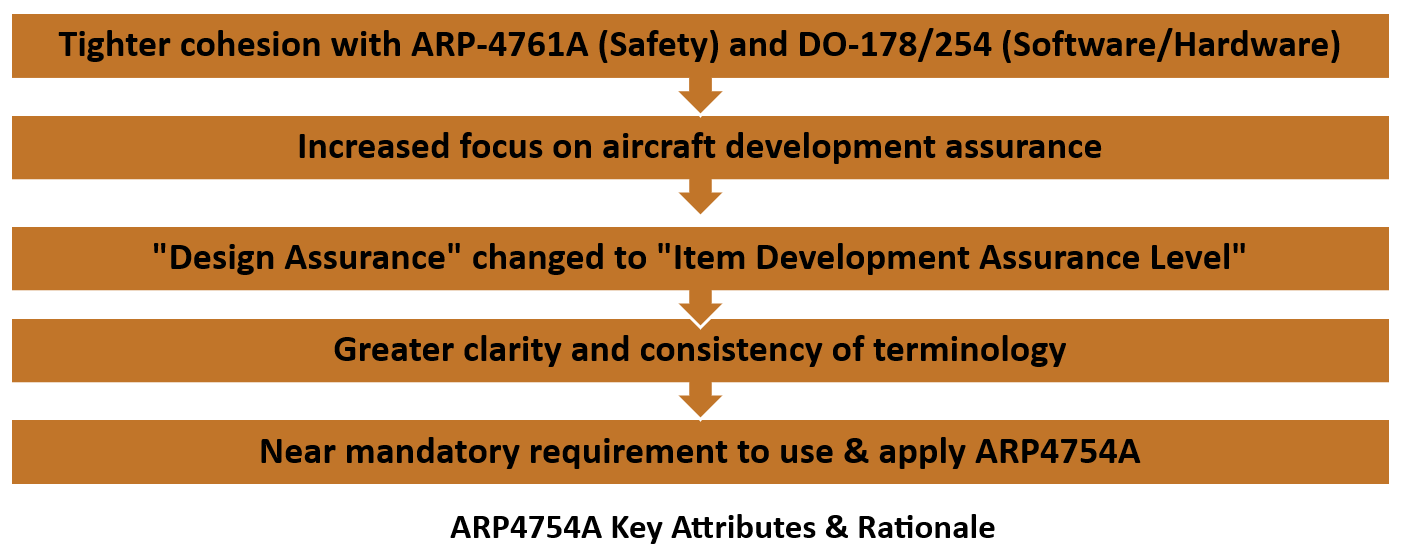
- “Plans” comply with safety requirements and summarize what you will do, while
- “Processes” state how you will implement the Plans, and
- “Checklists” denote objective review criteria to determine if Processes were followed, then
- “Process Assurance Audits” assess conformance of engineering/manufacturing activities, including respective transitions to those Processes and Reviews.
ARP4754B versus ARP4755A
- Better alignment of ARP4754B to the forthcoming ARP4761A (itself an update over ARP4761)
- Changes to Development Assurance Level (DAL) assignment
- Model-based systems engineering
- Applying ARP4754B’s greatly enhanced “Modifications and Reuse” for aircraft and avionics systems
- Better examples for applying ARP4754B
ARP4754’s Planning Process
